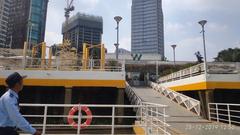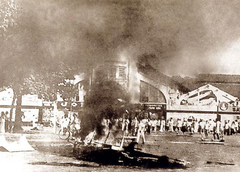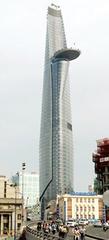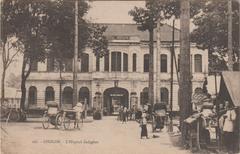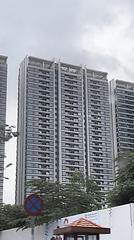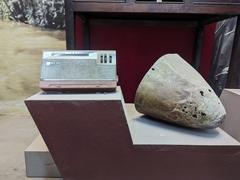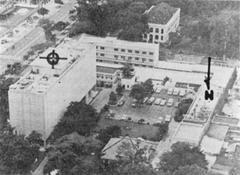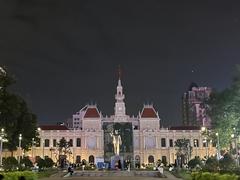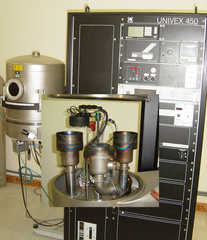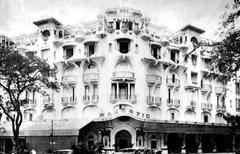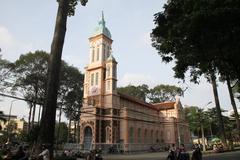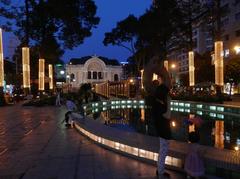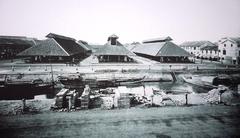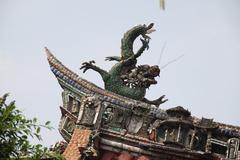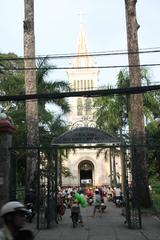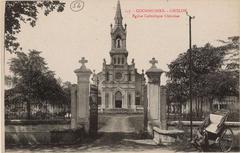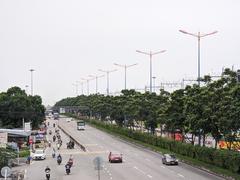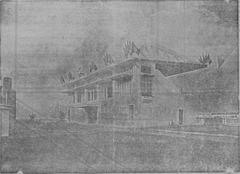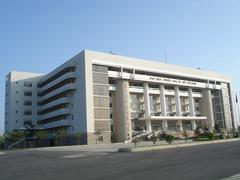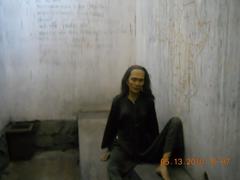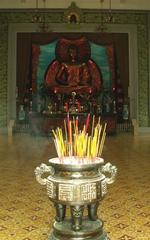Visiting Hours, Tickets, and Historical Significance of Chùa Giác Lâm, Ho Chi Minh City
Date: 18/07/2024
Introduction
Chùa Giác Lâm, also known as Giac Lam Pagoda, stands as one of Ho Chi Minh City’s oldest and most revered Buddhist temples. Founded in 1744 during the reign of Lord Nguyễn Phúc Khoát, this historical monument was the brainchild of Lý Thụy Long, a devout Buddhist and wealthy philanthropist from Minh Hương (Vietnam Online). Originally named Cẩm Sơn, meaning ‘Mountain of Preciousness,’ the temple was a beacon of spiritual significance and tranquility. Over the centuries, Chùa Giác Lâm has evolved architecturally and culturally, becoming a pivotal center for Mahayana Buddhism in Vietnam. Its rich history, combined with its serene gardens and intricate architectural details, makes it a must-visit destination for anyone interested in Vietnamese culture and religious practices. Notably, the temple underwent a major restoration project in 1953, including the construction of the iconic seven-story stupa (Vietnam Guide). As a living monument, Chùa Giác Lâm continues to host various religious activities and festivals, drawing both local and international visitors seeking to immerse themselves in its spiritual ambiance.
Table of Contents
- Introduction
- History of Chùa Giác Lâm
- Cultural and Religious Practices
- Visitor Experience
- Nearby Attractions
- Conclusion
- FAQ
History of Chùa Giác Lâm
Founding and Early Years
Chùa Giác Lâm, established in 1744 by Lý Thụy Long, a native of Minh Hương, stands as a testament to the enduring spiritual and cultural heritage of Vietnam. The temple, originally named Cẩm Sơn (‘Mountain of Preciousness’), was built to serve as a center for Buddhist worship and community gatherings.
Architectural Evolution
The architectural style of Chùa Giác Lâm has evolved significantly over the centuries. Initially constructed with simple wooden structures and thatched roofs, the temple underwent major renovations in the early 19th century under the supervision of Abbot Thích Tổ Tông. During this period, the temple was expanded to include the main hall (Chánh Điện), the Dharma hall (Giảng Đường), and the bell tower (Tháp Chuông). In 1953, Abbot Thích Hồng Hưng initiated a significant restoration project, which included the construction of the seven-story stupa (Bảo Tháp), symbolizing the temple’s enduring legacy and importance in Vietnamese Buddhism.
Cultural and Religious Practices
Chùa Giác Lâm is an active center of religious practice following the Mahayana tradition of Buddhism, predominant in Vietnam. Daily rituals, meditation sessions, and Dharma talks are conducted by resident monks, attracting both local devotees and international visitors. One of the most important annual events is the celebration of Vesak, commemorating the birth, enlightenment, and death of the Buddha. This festival, held in May, features chanting, alms offerings, and lantern releases, creating a festive and serene atmosphere.
Visitor Experience
For visitors, Chùa Giác Lâm offers a unique opportunity to explore Vietnam’s rich Buddhist heritage and experience the tranquility of a historical temple. The temple grounds are adorned with lush gardens, ancient trees, and serene ponds, providing a peaceful retreat from the bustling city. Visitors can participate in guided tours, which offer insights into the temple’s history, architecture, and religious practices. The main hall houses a magnificent statue of the Buddha, surrounded by intricate carvings and murals depicting scenes from Buddhist scriptures. The seven-story stupa, with its impressive height and ornate design, is another highlight. Visitors can climb to the top for a panoramic view of the surrounding area.
Visiting Hours and Tickets
Chùa Giác Lâm is open daily from 5:00 AM to 8:00 PM. Admission is free, but donations are welcome to support the temple’s maintenance and activities.
Travel Tips
- Dress Code: Visitors are advised to dress modestly, covering shoulders and knees, as a sign of respect for the sacred site.
- Photography: Photography is allowed in most areas, but be mindful of signs indicating restricted zones.
- Guided Tours: Consider joining a guided tour to gain deeper insights into the temple’s history and significance.
Nearby Attractions
- Chinatown (Chợ Lớn): Explore the vibrant Chinatown area, known for its bustling markets and rich cultural heritage.
- Thien Hau Temple: Another historic temple dedicated to the sea goddess Mazu, located a short distance from Chùa Giác Lâm.
- War Remnants Museum: Learn about Vietnam’s history and the impacts of the Vietnam War at this well-known museum.
Conclusion
Chùa Giác Lâm stands as a testament to Vietnam’s rich cultural and religious heritage. Its history, architectural evolution, and ongoing preservation efforts make it a significant landmark in Ho Chi Minh City. For those seeking to understand the spiritual and historical fabric of Vietnam, a visit to Chùa Giác Lâm offers an enriching and memorable experience.
FAQ
Q: What are Chùa Giác Lâm’s visiting hours? A: The temple is open daily from 5:00 AM to 8:00 PM.
Q: Is there an admission fee to visit Chùa Giác Lâm? A: No, admission is free, but donations are welcome.
Q: Can I take photos at Chùa Giác Lâm? A: Yes, photography is allowed in most areas, but please be mindful of restricted zones.
Q: Are there guided tours available at Chùa Giác Lâm? A: Yes, guided tours are available and recommended for a more informative experience.
References
- Discover Chùa Giác Lâm - Visiting Hours, Tickets, and Historical Insights, 2024, Audiala Discover Chùa Giác Lâm
- Visiting Chùa Giác Lâm - History, Cultural Significance, and Visitor Information, 2024, Audiala Vietnam Online
- Essential Visitor Tips for Chùa Giác Lâm - Best Time to Visit, Dress Code, and More, 2024, Audiala Vietnam Guide
- UNESCO World Heritage Centre, 2024, UNESCO UNESCO
